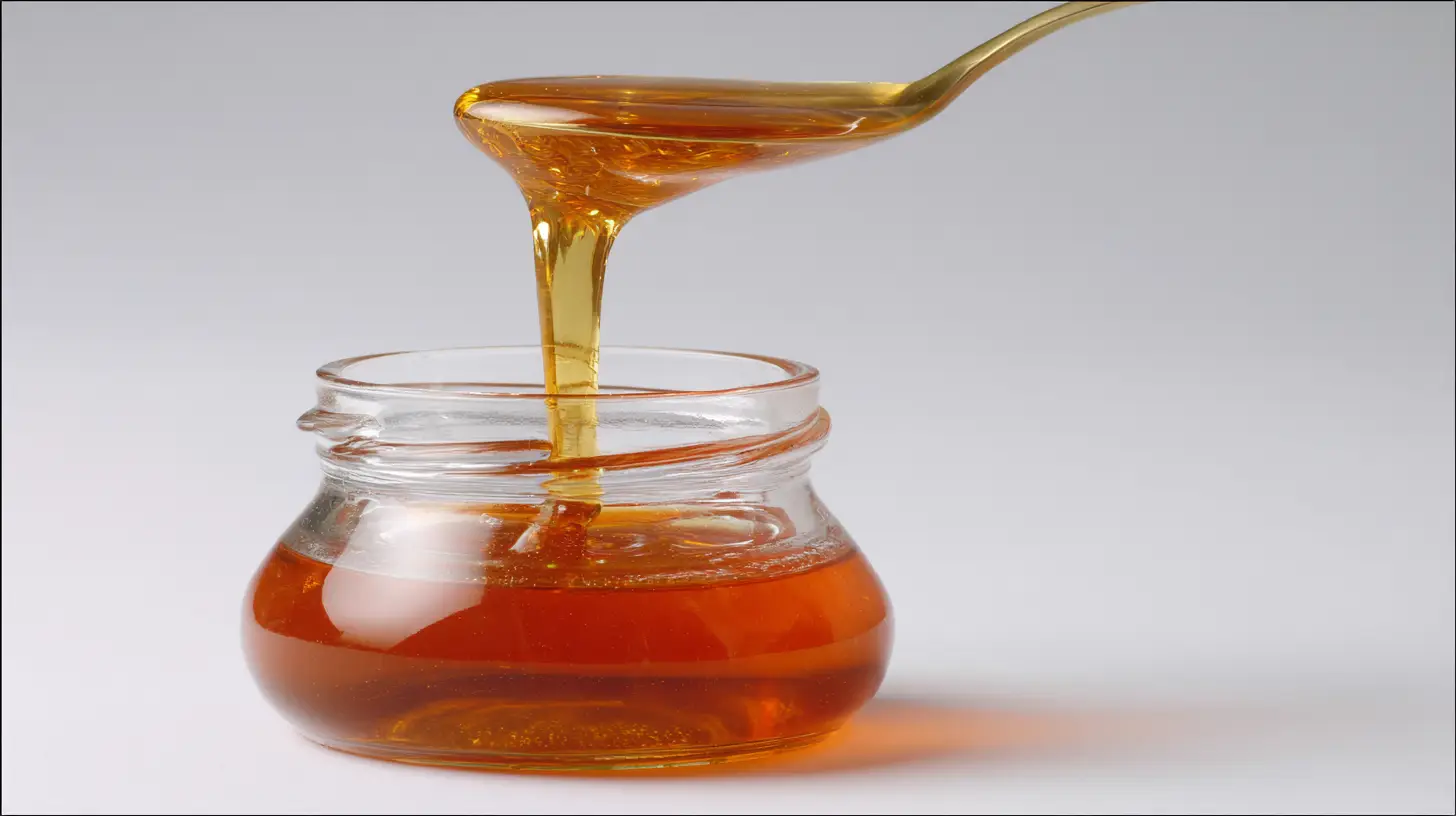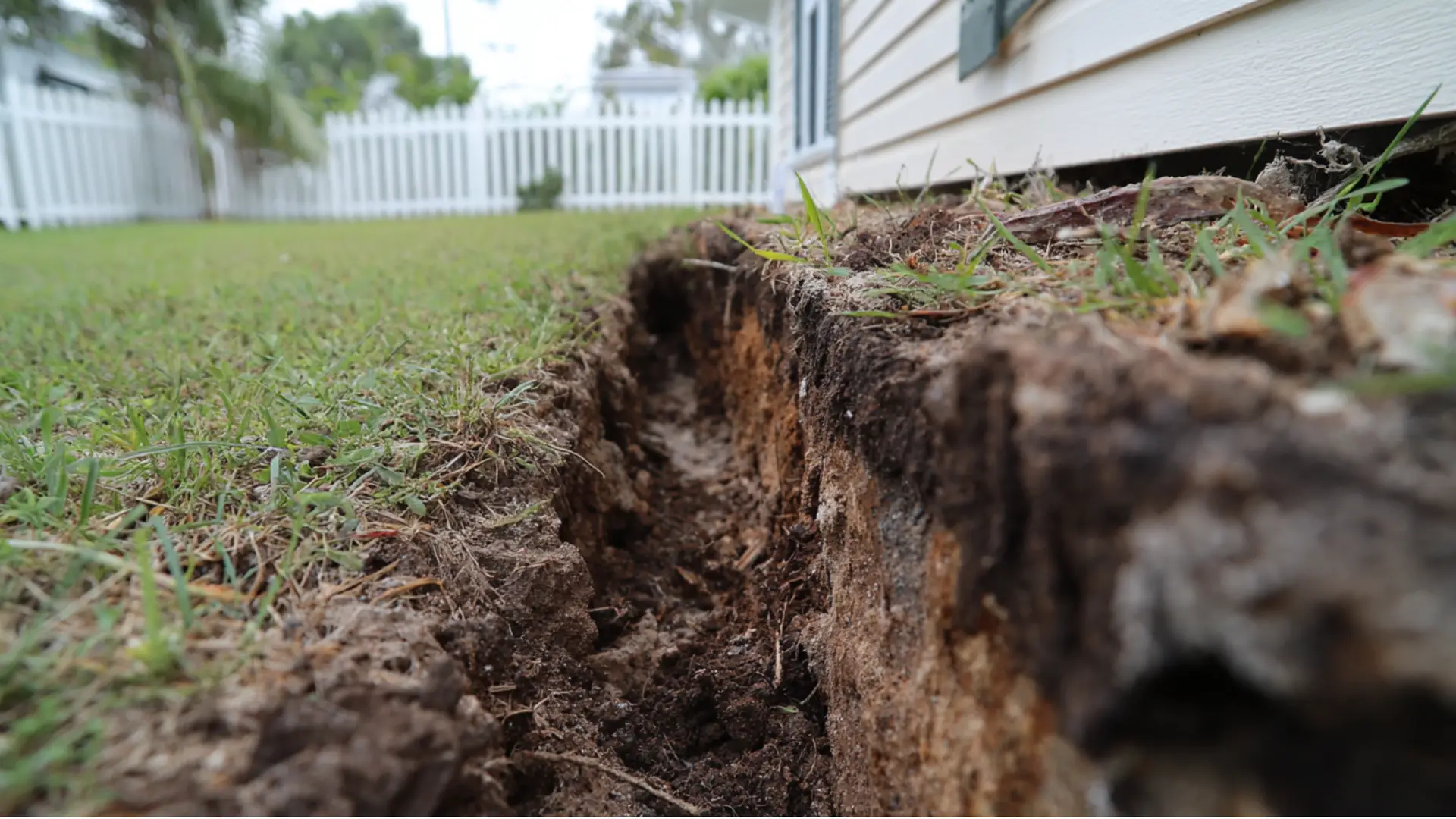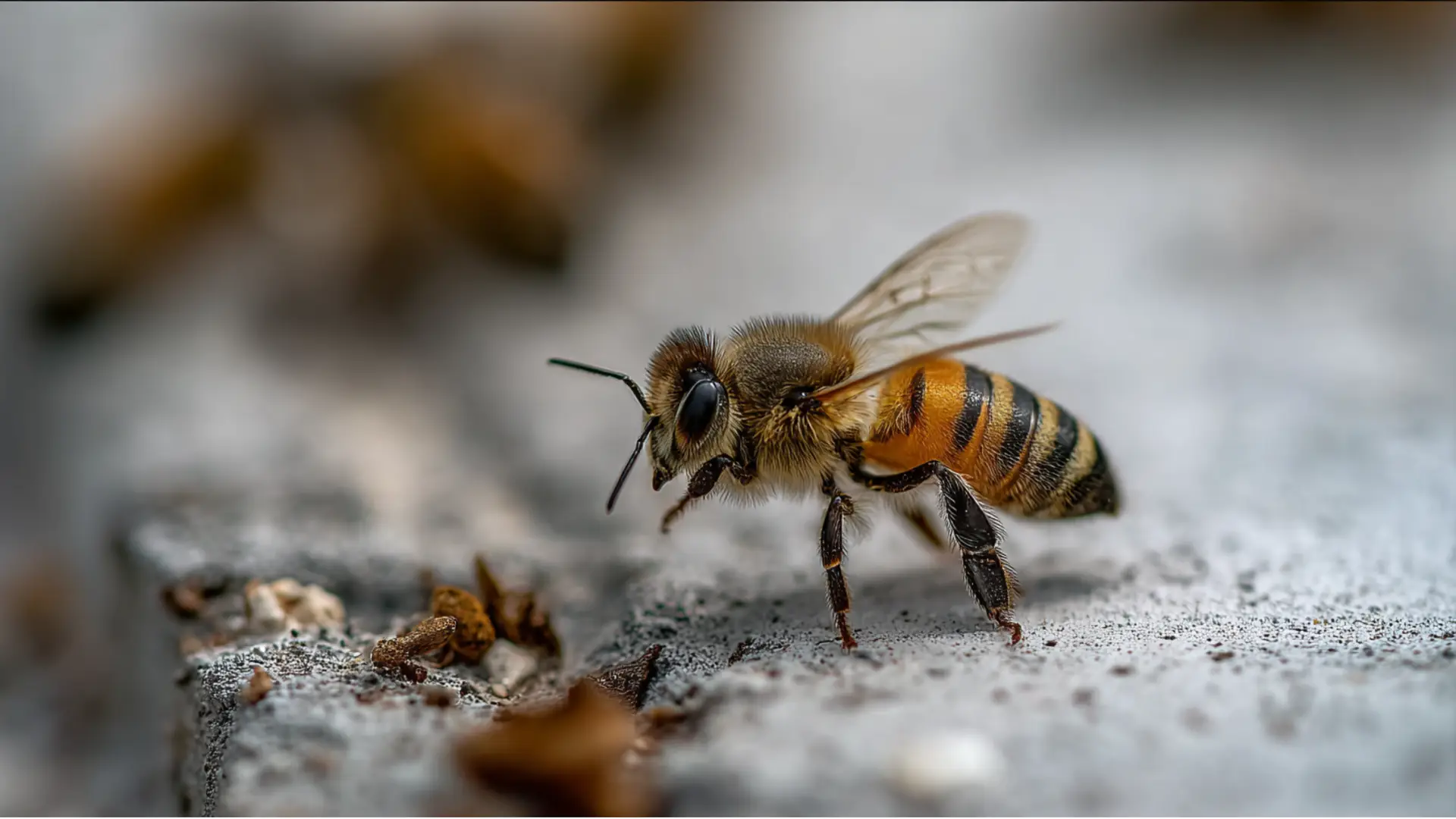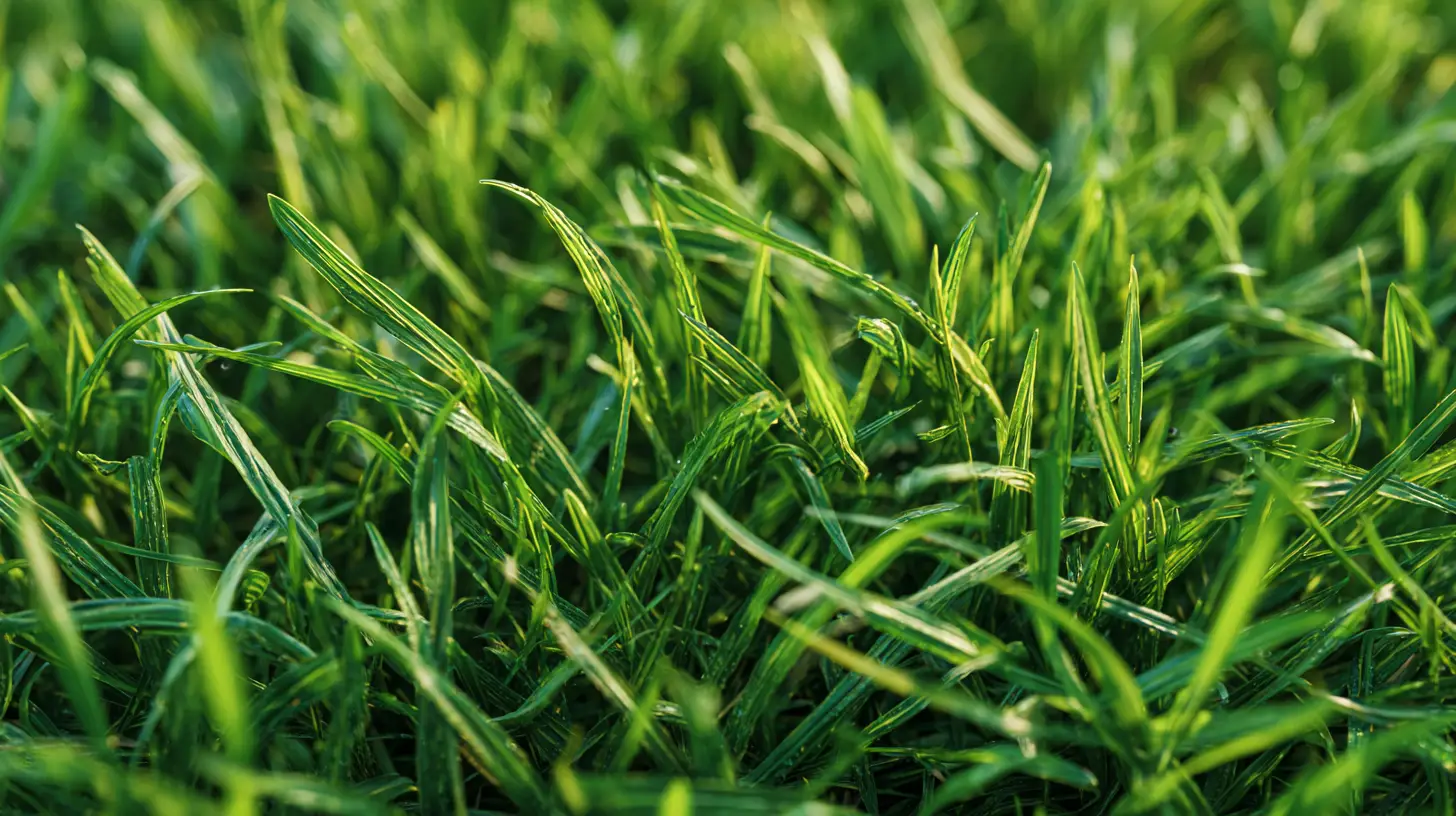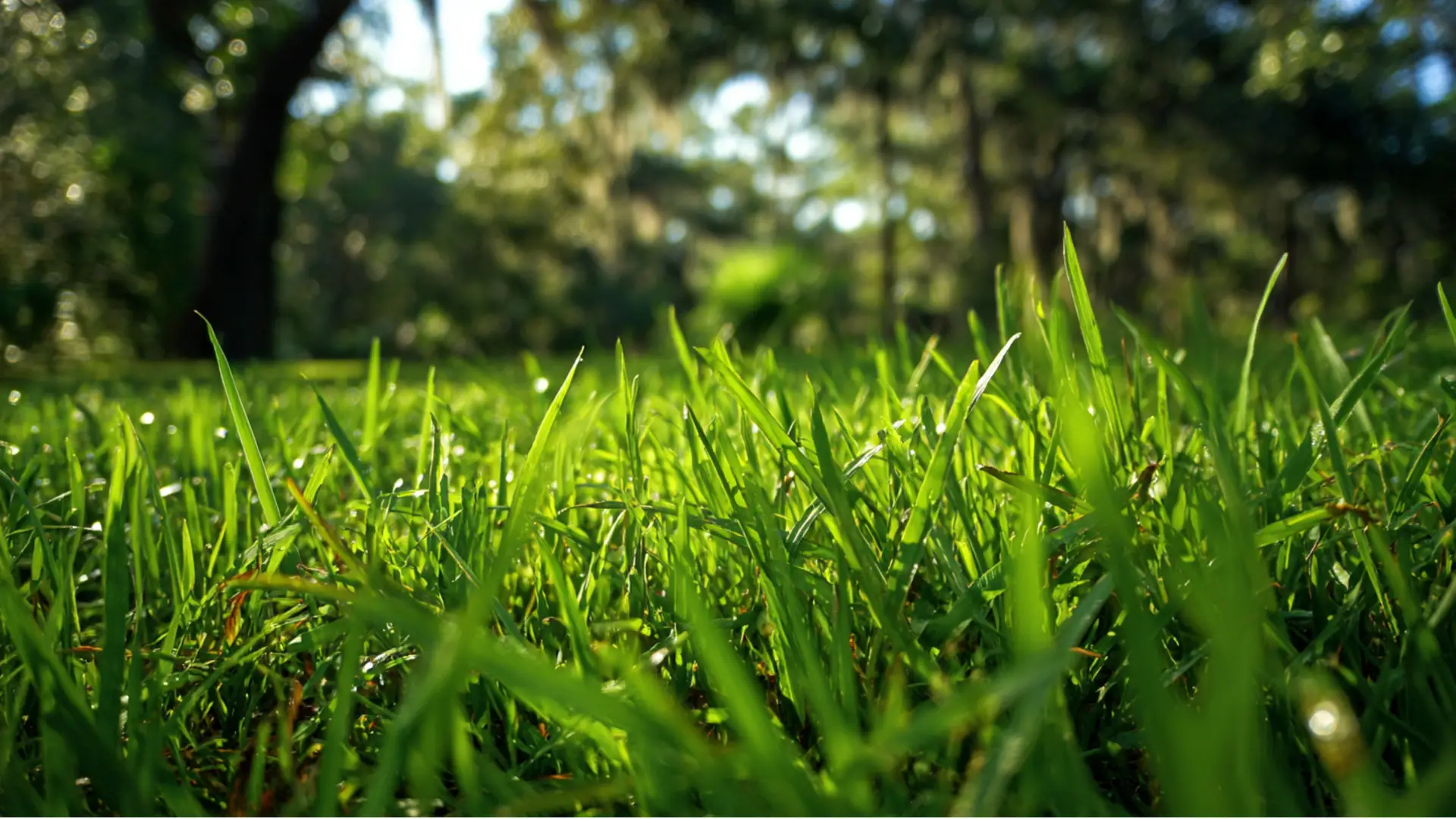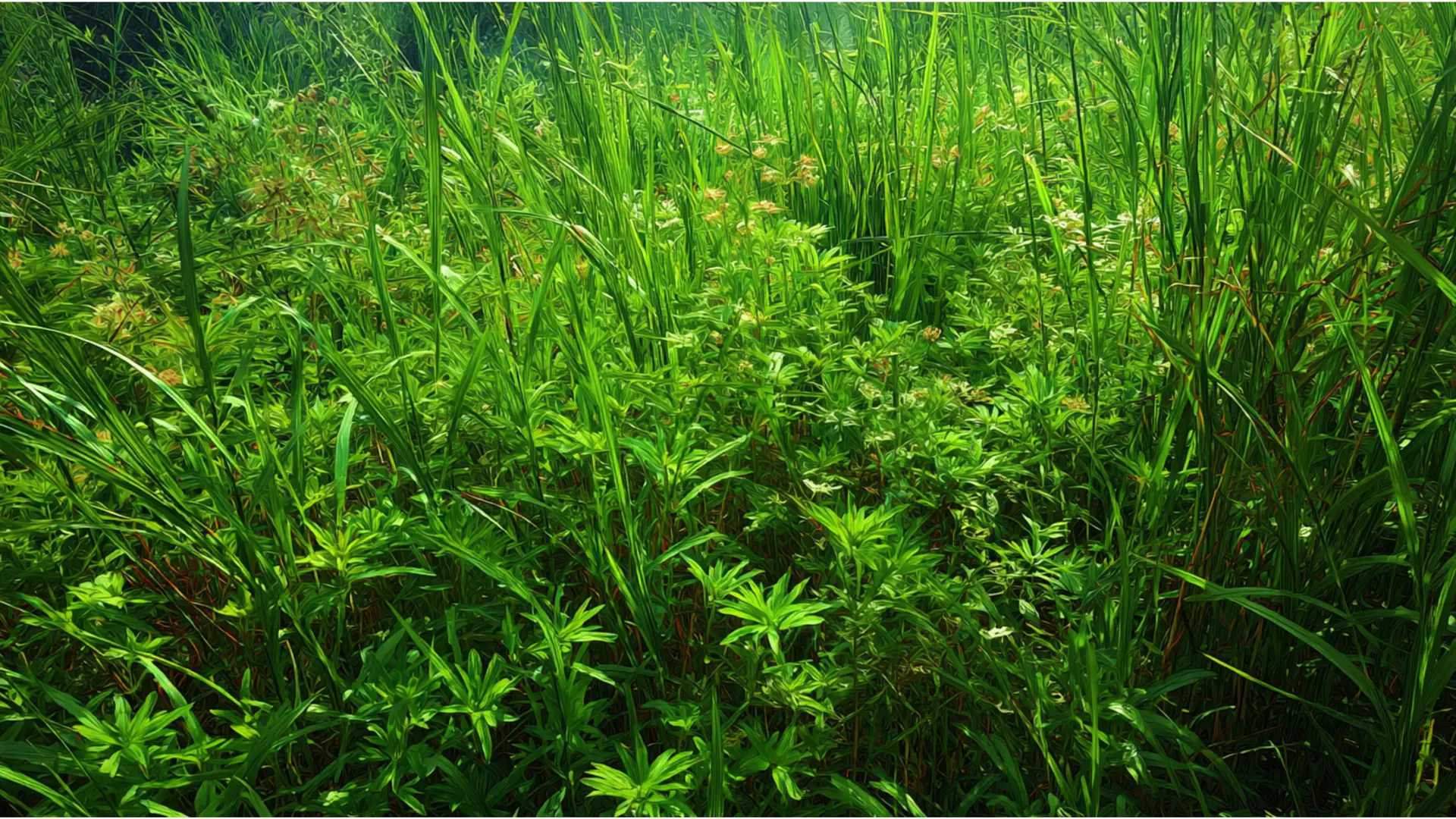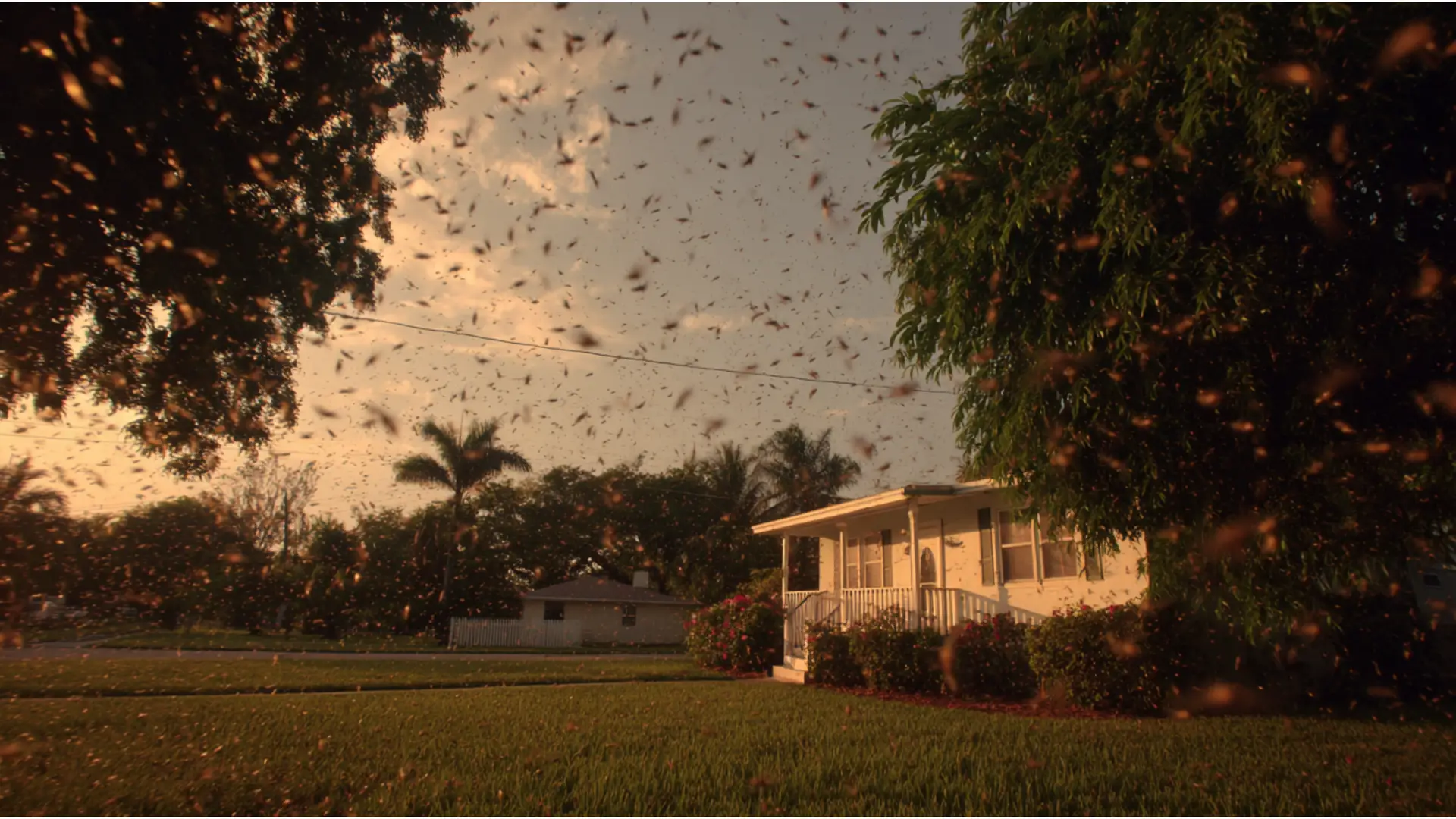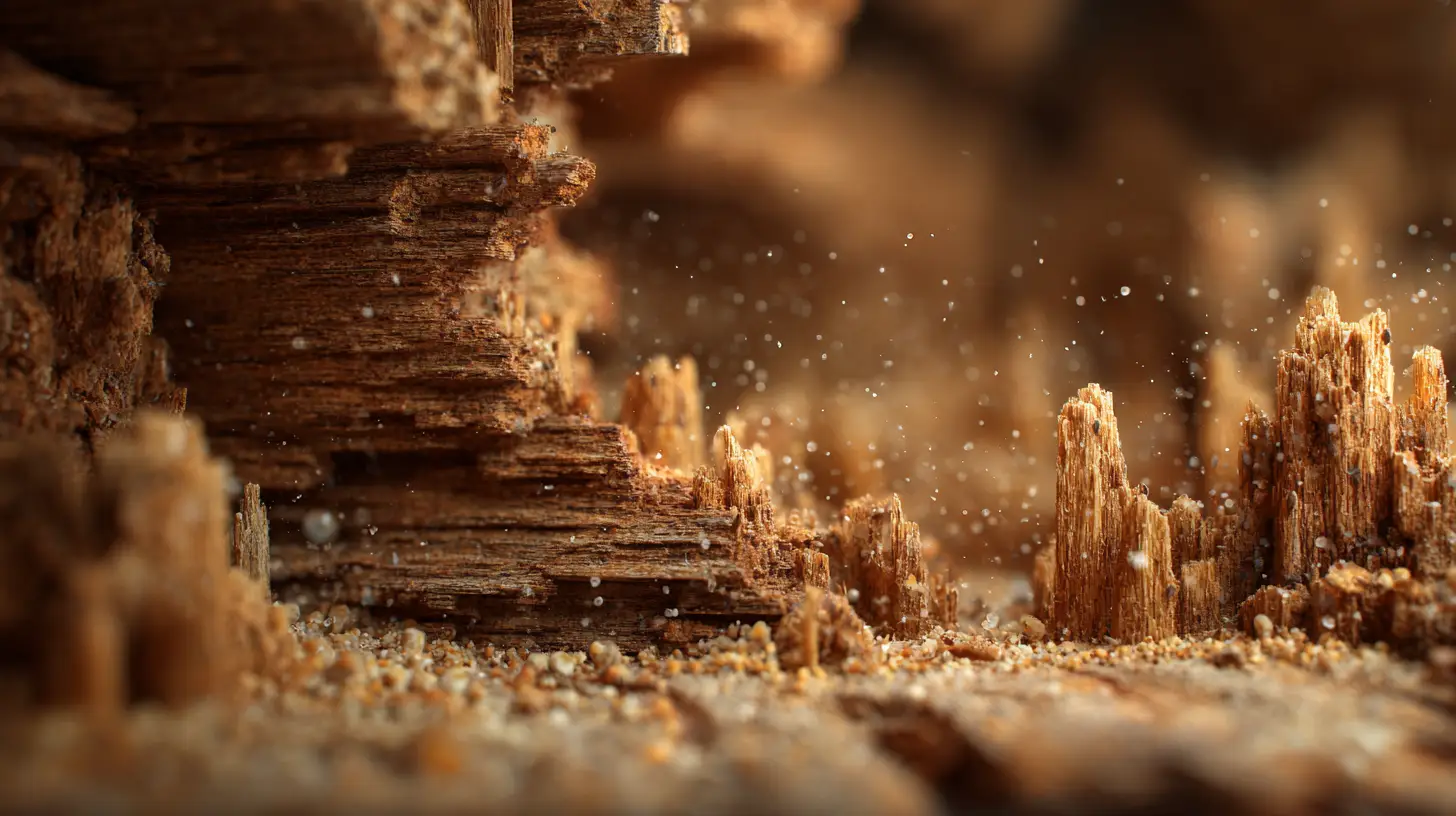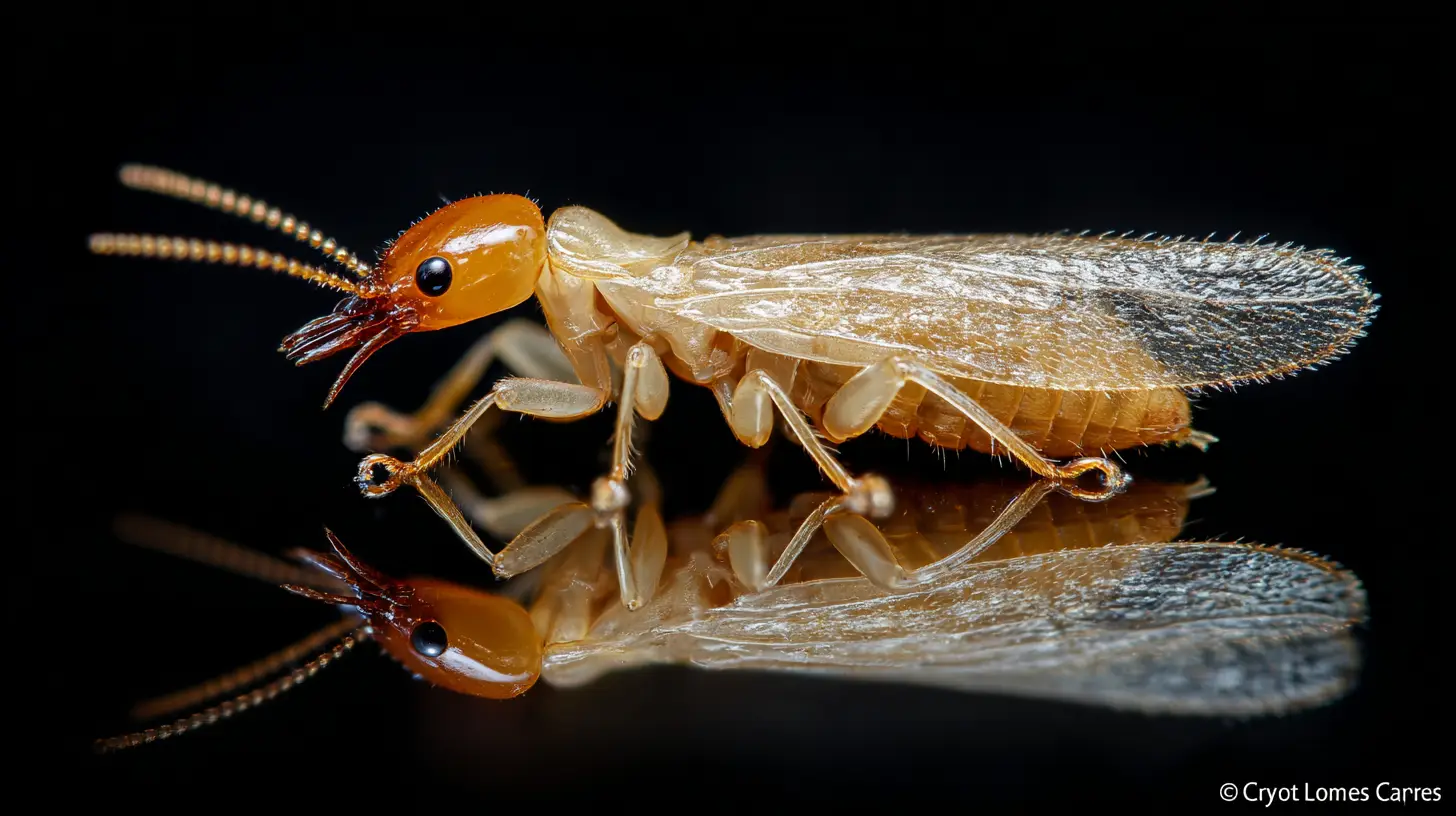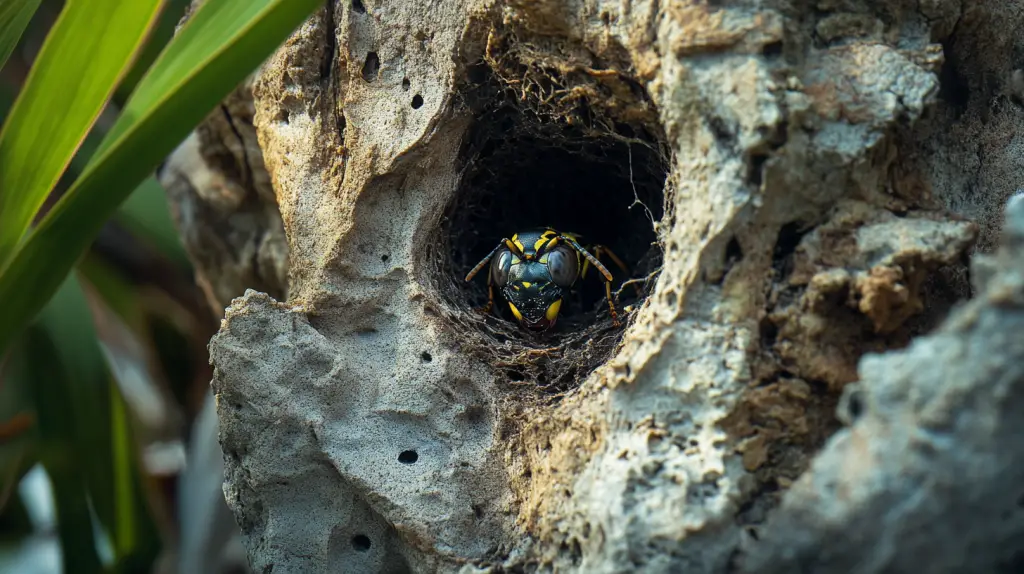
Table of Contents
When you spot a wasp nest on your Lakewood Ranch home, your first instinct is probably to run inside, slam the door, and call someone else to deal with it. That’s a completely reasonable reaction – wasps can be aggressive, territorial, and downright scary when they decide you’re a threat to their real estate.
But here’s the thing: if you’re looking at those distinctive tube-shaped mud nests that look like someone smeared clay on your eaves or garage wall, you might be dealing with mud dauber wasps – arguably the most chill wasps you’ll encounter in Florida.
These solitary insects are basically the introverts of the wasp world. They mind their own business, rarely sting, and are actually doing you a favor by hunting down spiders around your property. The question is: can you safely remove their nests yourself, or should you still call in the professionals?
Let’s talk about when DIY mud dauber removal makes sense, when it doesn’t, and how to tell the difference.
Key Takeaways
- Proper identification is crucial. Make sure you’re actually dealing with mud dauber nests rather than more aggressive wasp species before attempting any removal.
- Activity assessment determines your approach. Inactive nests can often be safely removed DIY, while active nests require professional intervention.
- Safety gear is non-negotiable. Even with docile mud daubers, wear protective clothing and work carefully during removal.
- Prevention beats removal. Address spider populations and eliminate nesting sites to reduce future mud dauber attraction to your property.
- When in doubt, call professionals. The cost of professional removal is minimal compared to the risk of misidentifying nest types or activity levels.
- Lakewood Ranch conditions extend activity seasons. Our year-round warm weather means nests may remain active longer than in other climates.
The goal is maintaining your property’s appearance and preventing pest issues while prioritizing safety and effectiveness.
What Makes Mud Daubers Different from Other Wasps
Before we dive into removal strategies, you need to understand why mud daubers are in a completely different category from the aggressive wasps that make Florida summers miserable.
- Mud daubers are solitary. Unlike yellow jackets or hornets that live in colonies and will collectively lose their minds if you threaten their nest, mud daubers work alone. There’s no angry swarm waiting to defend the homestead.
- They’re not territorial. Mud daubers don’t see you as a threat to their territory. They’re focused on hunting spiders and building their individual mud tubes. You can often work around active mud dauber nests without any aggression.
- They rarely sting. While they technically can sting, mud daubers almost never do. They’re not defensive, and they don’t see humans as prey or threats worth their time.
- Their nests are temporary. Mud dauber nests are used for raising one generation of larvae, then abandoned. They don’t build permanent colonies that expand year after year.
This doesn’t mean you should be completely casual about mud dauber removal, but it does mean the risk level is dramatically lower than dealing with other wasp species.

Get Pest-Free Today!
Trust Waves Pest Control for expert pest solutions in Florida. Call now or request your free quote online!
Request a QuoteIdentifying Mud Dauber Nests vs. Other Wasp Nests
In Lakewood Ranch, you’ll encounter several different types of wasp nests, and proper identification is crucial for safety:
- Mud dauber nests look like tubes or pipes made of dried mud, usually built individually rather than in clusters. They’re often found under eaves, on walls, or in protected areas like garages or sheds.
- Paper wasp nests look like open umbrellas made of gray papery material, with visible hexagonal cells. These wasps ARE aggressive and territorial.
- Yellow jacket nests are usually hidden in wall voids, underground, or in protected spaces, with wasps flying in and out of a small opening.
- Hornet nests are large, football-shaped structures made of paper-like material, often hanging from trees or under eaves.
If you’re looking at anything other than those distinctive mud tubes, stop right there and call a professional. Those other species will absolutely ruin your day if you mess with their nests.
The Active vs. Inactive Assessment
The most important step in mud dauber removal is determining whether the nest is currently active. This makes the difference between a simple DIY project and a situation that requires professional help.
Signs of an active nest:
- Wasps flying in and out of the tubes
- Fresh mud or recent construction activity
- Wasps visible on or around the nest
- The mud looks fresh and hasn’t been weathered
Signs of an inactive nest:
- No wasp activity after observing for several hours
- Weathered, cracked, or faded mud
- Spider webs across the nest openings
- Debris or vegetation growing around the nest
Best times to observe: Early morning or late evening when wasps are less active but still visible if present. In Lakewood Ranch’s year-round warm weather, mud daubers can remain active longer than in cooler climates, so be thorough in your assessment.
If you’re not 100% certain the nest is inactive, treat it as active and consider professional removal.
DIY Removal for Inactive Nests
If you’ve confirmed the nest is inactive, removal is straightforward and relatively safe:
- The scraping method: Use a putty knife, paint scraper, or similar tool to scrape the mud nest off the surface. Work slowly to avoid spreading debris, and have a bag ready to collect the pieces.
- The water method: A strong stream from your garden hose can effectively dissolve and wash away mud nests. This works particularly well for nests on surfaces that can handle water exposure.
Essential safety gear:
- Long sleeves and pants
- Gloves
- Safety glasses or face protection
- Closed-toe shoes
Even though mud daubers are docile, there’s always a small chance you missed something in your activity assessment, or that other insects have moved into the abandoned nest.
Clean-up considerations: After removing the nest, sweep up all debris promptly. Leftover larvae can attract ants and other pests. Wash the area if possible to remove any pheromone traces that might attract future nesting.
When to Call the Professionals
Even with mud daubers’ peaceful reputation, certain situations call for professional intervention:
- Active nests: If there’s any wasp activity, don’t risk it. Professional pest control technicians have the equipment and experience to handle active nests safely.
- Hard-to-reach locations: Nests under high eaves, in tight spaces, or requiring ladder work are best left to professionals with proper equipment.
- Multiple nests: If you’re seeing several mud dauber nests around your property, there might be an underlying attractant issue that requires professional assessment.
- Allergy concerns: If anyone in your household has known reactions to insect stings, professional removal eliminates even the small risk of a mud dauber sting.
- Uncertainty about nest type: If you’re not 100% sure you’re looking at mud dauber nests rather than more aggressive wasp species, get professional identification first.
The Lakewood Ranch Mud Dauber Reality
Our local conditions create some specific challenges and considerations for mud dauber management:
- Year-round activity: Unlike northern climates where wasp activity dies down in winter, Lakewood Ranch’s subtropical climate means mud daubers can remain active throughout the year. Nests that appear inactive might just be temporarily quiet.
- Abundant food sources: Our warm, humid climate supports large spider populations, which means excellent hunting for mud daubers. This makes your property more attractive for nesting.
- Building materials: Many Lakewood Ranch homes have stucco, stone, or textured surfaces that provide excellent attachment points for mud nests.
- Landscaping factors: Extensive outdoor living spaces, pool areas, and landscaping create numerous sheltered spots perfect for mud dauber nesting.
Prevention Strategies That Actually Work
The best mud dauber management is preventing nests in the first place:
- Eliminate spider populations: Since mud daubers hunt spiders, reducing spider habitat around your home makes your property less attractive. Regular cleaning of spider webs, reducing outdoor lighting that attracts insects, and maintaining tidy landscaping all help.
- Seal potential nesting sites: Fill cracks and gaps in exterior walls, especially around eaves, windows, and doors. Pay attention to areas where different building materials meet.
- Reduce moisture sources: Fix leaky outdoor faucets, improve drainage around your foundation, and eliminate standing water that supports the insect populations mud daubers hunt.
- Regular inspections: During peak nesting season (spring through fall), regularly check common nesting areas so you can address new nests before they become established.
What to Expect from Professional Removal
If you decide to call in professionals for mud dauber removal, here’s what the process typically involves:
- Assessment: Experienced technicians can quickly identify nest types and activity levels, potentially saving you from misidentifying more dangerous wasp species.
- Safe removal: Professionals have protective equipment and specialized tools for removing nests in challenging locations.
- Prevention recommendations: Good pest control companies will identify attractants and suggest modifications to prevent future nesting.
- Follow-up options: Some companies offer monitoring or treatment programs if mud daubers are a recurring problem.
Cost Considerations: DIY vs. Professional
- DIY costs: Minimal – just basic tools you probably already have and protective clothing. Total cost usually under $50 for safety gear if you don’t already have it.
- Professional costs: Typically $100-$300 depending on the number of nests, location difficulty, and whether follow-up treatment is needed.
For single, easily accessible inactive nests, DIY removal makes financial sense. For multiple nests, difficult locations, or active nests, professional removal often provides better value when you factor in safety and effectiveness.
The Bottom Line for Lakewood Ranch Homeowners
Mud dauber wasps are about as user-friendly as wasps get. They’re beneficial insects that control spider populations, and their nests can often be safely removed by homeowners when inactive.
The key is accurate identification and honest assessment of the situation. If you’re dealing with confirmed mud dauber nests that show no activity, DIY removal is usually safe and straightforward. If there’s any doubt about nest type or activity level, professional help ensures your safety and complete removal.
Don’t let mud dauber nests turn into a bigger problem by attracting other pests or creating unsightly damage to your home’s exterior. Address them promptly, but do it safely.
Frequently Asked Questions (FAQs)
How can I tell the difference between mud dauber nests and more dangerous wasp nests?
Mud dauber nests look like individual tubes or pipes made of dried mud, while paper wasps build open umbrella-shaped nests with visible cells, and yellow jackets typically nest in hidden cavities. If you see anything other than distinctive mud tubes, call a professional for identification.
Is it safe to remove mud dauber nests myself?
Yes, for inactive nests. Mud daubers are not aggressive and rarely sting. However, always wear protective clothing and ensure the nest is truly inactive before attempting removal. If there’s any wasp activity or you’re uncertain, professional removal is safer.
What’s the best time of day to remove mud dauber nests?
Early morning or late evening when any remaining wasps would be less active. However, if you’ve confirmed the nest is inactive, timing is less critical since there shouldn’t be any wasps present.
Can I just leave mud dauber nests alone?
While mud daubers aren’t dangerous, old nests can attract other pests and create unsightly damage. They also provide framework for other wasp species to build on. It’s better to remove them, especially inactive ones.
How do I prevent mud daubers from building new nests?
Reduce spider populations around your home by regularly removing webs, seal cracks and gaps in exterior walls, minimize outdoor lighting that attracts insects, and maintain clean, dry outdoor areas.
What should I do if I accidentally disturb an active mud dauber nest?
Move away calmly and give the area space. Mud daubers are unlikely to chase or attack like other wasps, but it’s still wise to avoid the area until they settle down. If you notice increased activity, call a professional.
Are there any legal restrictions on removing wasp nests in Florida?
There are no specific regulations against removing wasp nests from your own property in Florida. However, always prioritize safety and consider professional help for challenging situations.
How quickly do mud daubers build their nests?
Individual mud tubes can be completed in a few days to a week, depending on weather and mud availability. Regular inspections help catch new construction early when removal is easier.

